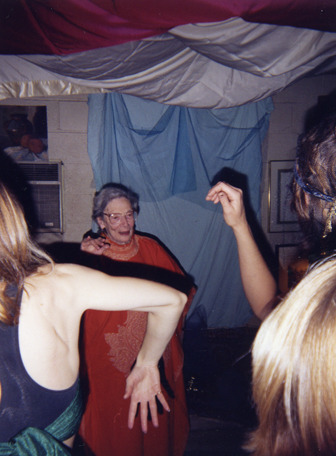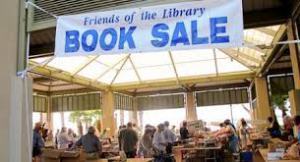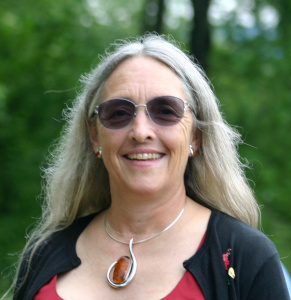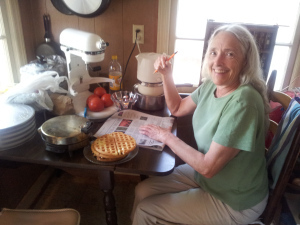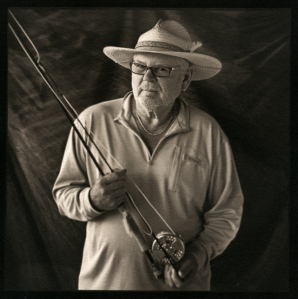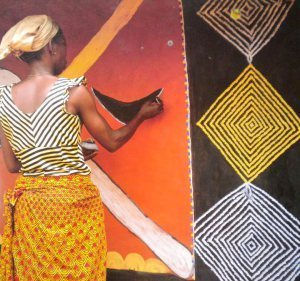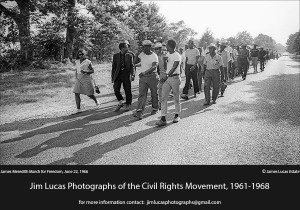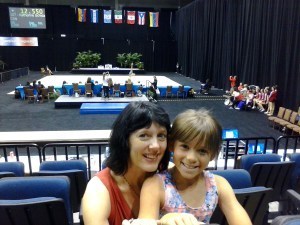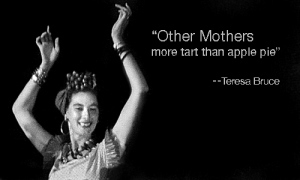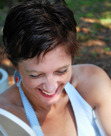Teresa Bruce's Blog, page 33
October 5, 2014
The Flip Side of Othermothering
If you’ve read “The Other Mother: a Rememoir,” you already know what I got out of having Byrne Miller as my other mother. But the flip side is what the other mother gets out of the relationship.
Parents don’t get security from their kids. Caregiving, according to the Ericksonian theory, is the primary role in mid-life. But what about those of us who don’t have kids or whose children are older? We still have nurturing qualities that could come out in lots of other relationships.
Being an other mother is a healthy way to express that caregiving role. It can make you feel like you’ve contributed something incredibly important, perhaps the most important thing of all.
On a very personal side – I think othermothering can make us better mothers too. I really think it did with Byrne. Alison – her oldest biological daughter – suffered from schizophrenia.
Before Byrne started “collecting” daughters, she wanted so much to have Alison follow in her footsteps. To dance, to say the right things, meet the right people. But she was able to let Alison be the most independent person she could be because she could transfer some of those ambitions and expectations to “collected” daughters – like me.
She wasn’t a perfect mother — no woman is — and being an othermother gave her a do-over. It was her chance to apply the things she’d learned earlier in life and break out of the bounds she’d set for herself. Don’t we all owe ourselves a do-over once in a while?


October 2, 2014
Impending Granny Gap?
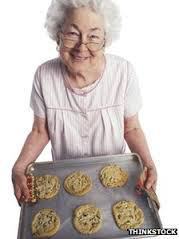
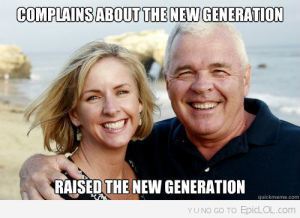 I just gave a talk to OLLI students — mostly retirees living in Beaufort and Hilton Head Island, about “othermothering.” Some waiting-to-be-grandmothers in the audience had a good chuckle about statistics I came across when researching the lecture.
I just gave a talk to OLLI students — mostly retirees living in Beaufort and Hilton Head Island, about “othermothering.” Some waiting-to-be-grandmothers in the audience had a good chuckle about statistics I came across when researching the lecture.
They weren’t surprised that other than celebrities and trailblazing women having their first babies when they’re 45 or older, the overall U.S. birthrate has been on a steady decline since 2007. And it’s not just this side of the pond.
The June 28th, 2013 edition of the Daily Mail informed readers that women with university degrees are bulging the belly curve even later by waiting until they turn 35 to make babies. The horror!
“If the phenomenon continues for another generation,” the article contends, “it means some grandparents will have to wait an extra 20 years, until the age of 70, to have their first grandchild.”
Let me clear my throat. If there is indeed an impending granny gap, othermothing is a low-tech way for women on both ends of it to meet their nurturing needs. Not to mention the chief beneficiaries of multiple mothers providing emotional support: the children they cherish.


September 24, 2014
A Library in the Limelight
I know the Friends of the Beaufort Library plan their annual fall book sale a year ahead of time but I could swear the timing of this one was personal. As my regular blog followers know, last week one of the many heroines in “The Other Mother: a rememoir,” Lisa Lepionka, passed away. Her husband Larry wrote, in a beautiful obituary, that in lieu of flowers Lisa would have preferred a contribution to the Friends of the Library at 311 Scott Street in Beaufort.
Two days before her memorial service also happened to be the date I was scheduled to give a talk about the book to the Library’s book club, in the exact location where I did most of the research for it — the District Collection archives. Though it came 25 years too soon, Lisa’s way of honoring the library was so fitting. She checked out more books from the Beaufort County Library than probably anyone other than her husband. And it was Lisa who oversaw the delivery of all of Byrne Miller’s personal papers to the District Collection, as was our shared Other Mother’s wish upon her death.
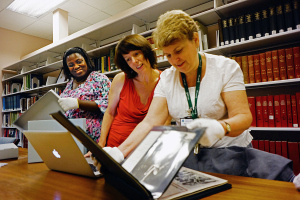
I couldn’t have verified the “pearls” of Byrne’s story without the Special Collections at the Beaufort County Library
I too, owe a debt of gratitude to the library — as most writers do. Not only was it crucial in verifying all that I remembered about Byrne Miller, it was the setting of one of the most important lessons I learned from my wise, collected sister Lisa. It was in the early 90s and Byrne’s beloved husband Duncan had died. On the anniversary of his death I wanted to give Byrne a card, decorated with lines from the many novels Duncan had written. So naturally I went to the library to do my research.
I started in the microfiche sections, scrolling through roll after roll of newspaper coverage and finding nothing about Duncan. I checked the fiction shelves under Miller, comma, Duncan and found nothing. It was the same with the card catalog and when I pushed the L-through-N drawer back along its metal rails I felt like I was abandoning a tiny wooden coffin. Nothing I had been told about Duncan, or rather nothing I had assumed about his success, was verifiable. Then I saw Lisa browsing through a back issue of The New York Times. Here’s a little excerpt.
I would have recognized my sister-by-Byrne anywhere. She sat just like Byrne, with perfect posture, even in a sagging, low-slung reading chair. Her silver hair flowed down her back, gathered like a bouquet of flowers with a twist of ribbon. She smiled to herself as she read, as though delighted with how the words were arranged on the page. If the Beaufort County Library was at that moment a stage, Lisa was bathed in a warm spotlight, and I had somehow fallen off into the orchestra pit.
It was Lisa who told me that Duncan’s six, full-length novels were never published — a fact the Byrne had never considered important enough to mention. And here’s the lesson I took away from Lisa, that afternoon, in the Beaufort County Library.
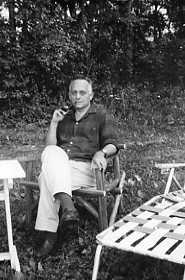
Duncan in Connecticut
It was me who was being unfair. Lisa spoke as though Duncan not being published was entirely the fault of editors in New York, in no way passing judgement on Duncan’s gift or Byrne’s omission. She needed no proof of Duncan’s talent, her loyalty to him was her own. It was years later before I realized that her compassion, her open-mindedness, extended to everyone she encountered. She forgave, even when others might not have.
So, for Lisa as well as for the Friends of the Library, I hope that this weekend’s book sale raises so much money that the Library’s shelves are overflowing with books — celebrated or not. And that we all keep reading, as though the words on the page are dancing just for us.
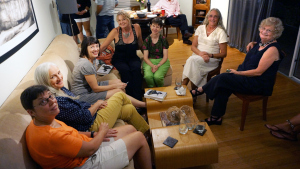
Me with several of my “sisters by Byrne” Lisa is wearing white


September 18, 2014
Farewell, wise sister
I’ve discovered the one drawback to creating a family: when you lose a sister you found on your own, it is as hard to accept as losing a blood relative. It was too soon to have to say goodbye to Lisa Lepionka – I was just beginning to realize how much she means to me. I’m using present tense because she will always be in my heart and, if I am a worthy sister, in my actions.
If you’ve read “The Other Mother: a rememoir” you already know Lisa – or at least the part that intersected with Byrne Miller’s incredible life. She is the wise “collected daughter,” the tall Swiss-German dance student and mother herself who became an anchor in Byrne’s life. Byrne depended on Lisa’s judgment so completely that she entrusted her with the care of Alison, her only surviving biological daughter.
I met Lisa in a modern dance master class of a company Byrne brought to Beaufort, though I knew of her from interviewing her professor husband in my other life as a TV reporter. Writing that phrase “professor husband” still makes me smile: Lisa was actually his younger student when she fell in love with Larry Lepionka, across the continent at a University frequented by hardworking immigrants like herself. He is responsible for bringing her to his hometown of Beaufort, South Carolina, by way of colleges in New England and dissertations in Switzerland and archeological digs in Africa. No wonder she seemed so exotic and confident to me; I was a twenty-something rookie who had never witnessed devoted, respectful partnerships that defined marriages like Lisa and Larry Lepionka’s or Byrne and Duncan Miller’s.
Where Byrne was flair and drama, Lisa’s was a calm devotion – to her husband and her son and daughter. I thought she was unflappable, that literally nothing scared her. Not even Byrne. The longest sentence I ever heard Lisa say was when she stopped Byrne from impetuously marching out of a terrible hip-hop dance performance at Spoleto. I held my breath, wondering how Byrne would react to Lisa’s declaration that it was disrespectful to members of the audience who were actually enjoying the performance. When Byrne sat back down without another word I knew that Lisa had a power none of us did. She was unflinchingly fair, deliberately kind and genuinely open-minded.
So I was stunned to find out that Lisa was actually intimidated by Byrne. It came out in one of many long talks, masquerading as interviews, during the writing of the book. Which made me respect her even more. She was brave even when it didn’t come easy.
It didn’t come easy this year. Yet she was so brave – meeting the news of every worsening diagnosis with the quiet determination to do whatever she needed to do to fight it. She told me that’s how she was raised. As soon as she or any of her five siblings were able to help around the house that’s what they were expected to do. “If you can do it yourself, you don’t ask someone else to do it for you,” she said as we were washing dishes one night after dinner.
From Lisa I learned that it is possible to be tough and gentle at the same time. That maybe the sign of truly loving something is fiercely demanding its best. Like public education. Lisa went down fighting for it to improve and for teachers to get the respect and remuneration they deserve. And the arts. If you support the arts you buy season tickets, you defend freedom of expression and you educate yourself as to the difference between attempt and mastery.
I’ve lost many friends and family members this year and each time I’ve figured out what to do and how to help by remembering how Lisa helped Byrne through hospitalizations and then Duncan’s illness and death. You don’t wring your hands and tell an ill or grieving friend to “call if there’s anything they need.” Lisa taught me you roll up your sleeves and show up. You change the garbage liners, you hang out the laundry, you check if the milk’s gone bad in the fridge. You ask what time your friend needs to be at the doctor’s, the lawyer’s, the funeral home and then tell her when you’ll pick her up.
So many of Lisa’s friends and family did just that, that she left us fully aware of her treasured place in our hearts. Sweet travels, my wise sister. We will dance together again — just on a different stage.
Lisa’s memorial service is Friday, September 19th, at the First Presbyterian Church of Beaufort at 4:30pm.


August 30, 2014
teresabrucebooks:One of my favorite “dudes who ‘get’ The ...
One of my favorite “dudes who ‘get’ The Other Mother” — helping Gary with his Beaufort portrait project. Faithful blog readers will remember Terry — from my blog about how fishing is nothing like dance.
 Originally posted on thebeaufortportraitproject:
Originally posted on thebeaufortportraitproject:
Terry with his Fly rod.


August 29, 2014
What I really hate about South Carolina
To all SC Legislators who rationalize every No vote against protecting women (I’m especially talking to Tim Scott) — think of the message it sends. Even imperfect laws are better than what we have now in SC
 Originally posted on Carolina Yankee:
Originally posted on Carolina Yankee:
And why you should, too.
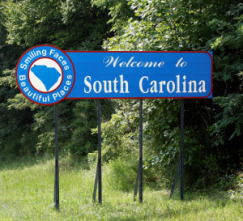 I’ve spent the past two years or so sharing my perspective, often with my tongue held firmly in my cheek, about the people, places and culture of South Carolina. Today, I won’t hold my tongue at all, but will go full Yankee on you.
I’ve spent the past two years or so sharing my perspective, often with my tongue held firmly in my cheek, about the people, places and culture of South Carolina. Today, I won’t hold my tongue at all, but will go full Yankee on you.
I’ve made no secret that much of South Carolina culture and politics causes me embarrassment, most of which I can laugh off. However, the fact that I live in the state that boasts the highest rate in the nation of women murdered by men makes my blood boil. South Carolina is at or near the top of too many embarrassing lists, but this statistic can no longer be kept buried on the back pages of unread newspapers. Shame on the legislators, educators, clergy and citizens – especially the women – of South Carolina and beyond who remain ignorant, silent and…
View original 954 more words


July 6, 2014
Out of Africa
The dirt floor was as hard as concrete. The open doorway cast a sun wedge into what was otherwise a cool dark hut. The thatch roof rustled with every breath of breeze. An 8-year-old American girl living in South Africa could stand in the middle and yell her lungs out and the solid mud walls would absorb the racket and swallow any echoes. I know, because I was that girl — standing inside a Zulu kraal, inhaling memories of Africa with every breath.
I didn’t know it at the time, but I was mentally documenting African Vernacular Architecture. Too bad it was forty years before Jon Sjokowski’s Indiegogo campaign at http://igg.me/at/mudhut
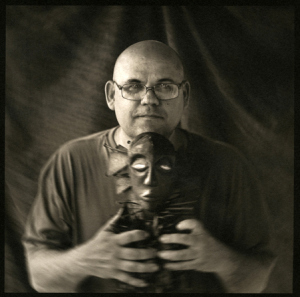
Jon’s portrait, part of Gary Geboy’s http://www.thebeaufortportraitproject.wordpress.com
He’s an architect living in Beaufort, South Carolina whose take on what constitutes “proper” building methods was permanently skewed by a Peace Corps stint in Zambia back in the 90s. When he wasn’t building latrines, he sketched every African-style insaka, hunting lodge or mosque he saw and studied how it worked. (it’s all on this website check it out)
He studied the baked mud, pre-weathered bricks that could be replenished literally in the back yard. Thatch roofs that allowed cooling breezes to pass through sleeping quarters. Women plastered walls in brilliant, geometric designs without chemicals, toxins or trips to a city for materials. But despite how sustainable, not to mention beautiful, these traditional (or “vernacular” in the vernacular of architect-speak) techniques seemed to Jon at the time, Western construction materials were considered more modern and desirable.
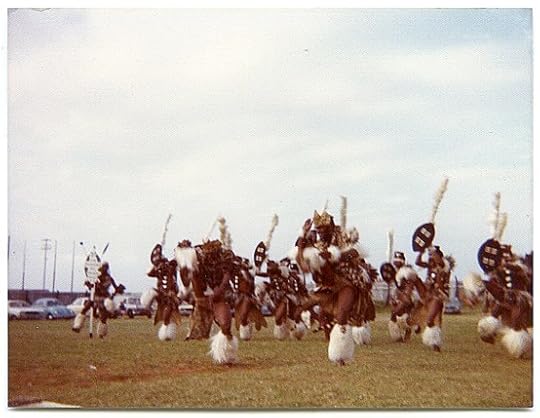
Zulu dancers in Durban, where I lived as a kid
If I went back to Natal, South Africa today it’d be a lot harder to find a kraal, or any example of African vernacular architecture. Which is where Jon’s campaign comes in. He’s raising funds to continue the work he started in Zambia. He’s traveling to Malawi, Lesotho and Swaziland – this time with a digital camera and an app to teach other architects, tourists, Peace Corps volunteers and villagers how to upload images of African Vernacular Architecture. He figures if he can at least document what’s left and build an easily accessible data base he can revitalize interest in the beauty, history and functionality of indigenous architecture before it’s too late.
I’m contributing as much as I can to his mud hut Indiegogo campaign because if there’s one thing I rant about incessantly, it is how homogenized and bland architecture in this county has become. Just consider Beaufort, South Carolina. Sure, we still preserve and celebrate our antebellum mansions, but what about our African-American architectural heritage? The last remaining Gullah praise houses, built by slaves, are disappearing and developers are itching to tear down historic, dilapidated freedman’s houses and replace them with oversized condos cloned from Florida and Arizona suburbs.
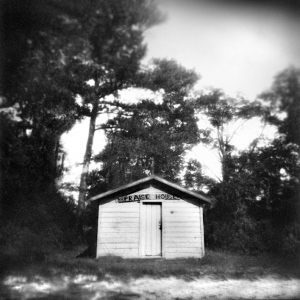
Eddings Point Praise House, St. Helena Island SC — photograph by Gary Geboy
Even if you’ve never stepped foot in a kraal, Africa’s vernacular architecture is part American history – of our collective human story. Jon’s campaign is a chance to say it is a story worth telling.


June 24, 2014
The Photographs of Freedom Summer
As a liberal, feminist, left-coast native who was probably a Latina in a former life, I know what it’s like to feel like an ex-pat in my own country. I’ve adopted South Carolina as my home, it’s where I’ve put down roots and intend to stay. It’s a hard choice to explain to friends who haven’t been here. So when I found these words on the website for the 50th Anniversary of the Mississippi Freedom Summer Conference I just transposed the words South Carolina for Mississippi:
“When you are in Mississippi, the rest of America doesn’t seem real; and when you are in the rest of America, Mississippi doesn’t seem real.” – Dr. Robert “Bob” Moses, Program Director 1961-65 Student Nonviolent Coordinating Committee.
I’ve driven through the Mississippi Delta. I have always been fascinated by the music birthed there, but it wasn’t until a fellow transplant to South Carolina encouraged me to drive the Blues Highway that I began to understand why those songs got written.
Now that same friend, Mississippi native Jane Hearn, has taken my education one giant leap further – she’s curated a photography exhibit debuting at Tougaloo College tomorrow for the 50th anniversary of Freedom Summer.
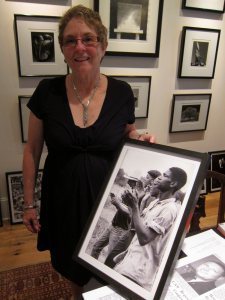
Jane Hearn with her favorite photograph taken by her late husband Jim Lucas
Curate isn’t nearly a descriptive-enough word for what she’s really done. She was married to a photographer named Jim Lucas (another reason we’re kindred spirits) and got stuck with 50,000 negatives when he died in a car accident on the set of a movie back in 1980. She’s lugged those boxes of negatives around for more than 30 years, unsure of what to do with them until news of the anniversary conference. It was a perfect time and place to honor her late-husband’s legacy – because among the 50,000 negatives were 4,000 documenting the civil rights movement from 1964-1968.
A lesser woman would have turned to bourbon facing that big of a challenge, but before Jane ended up in Beaufort with her second husband Terry she founded and directed an art colony at Tougaloo College in Jackson, Mississippi. To say she’s got an eye for art and composition is an understatement and she comes from a long line of civil rights activists. She joined the Beaufort Photography Club to learn about negatives and processing and enlisted the help of a Florida-based photographer named Red Morgan to help her cull through the images.
Sometimes it’s a really good thing to live in a town so small all the artsy types know each other and become good friends. Jane’s husband Terry Stone threw a party at their house last weekend so we could all get a sneak peek at Lucas’s images before they begin a four-stop tour of the Delta.
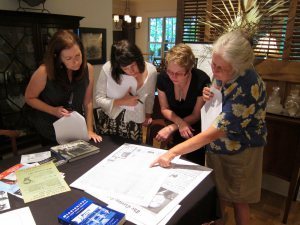
the preview party
It would be tragic if this show doesn’t make it to a museum here in South Carolina too. Lucas was witness to a movement not restricted to Mississippi, a history no Southern native or transplant can afford to forget. The photographs are truly documentary – he captured history as it was happening. Some images are still shocking, fifty years later. Newsmen waiting at the bombed out churches. The hastily-covered bodies Cheney, Goodman and Schwerner being wheeled into an autopsy. The fierce eyes of Wharlest Jackson Jr at his daddy’s funeral.
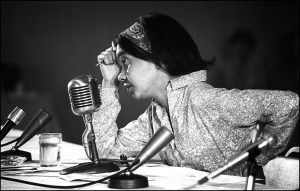
Photograph by Jim Lucas
But Jane took care to include images of hope as well, so that this 50th anniversary doesn’t pass without acknowledging all that was accomplished as well as lost. Her young husband captured an even younger Marian Wright before the world knew her as the founder of the Children’s Defense Fund. She’s leading her forehead into her fist, testifying before the Senate Subcommittee Hearings in 1967 – weary beyond her years. She’s the one who led Robert Kennedy into the sharecropper shacks to witness abject poverty first hard. She watched as he tried, for five minutes, to tickle and engage a baby to malnourished to respond.
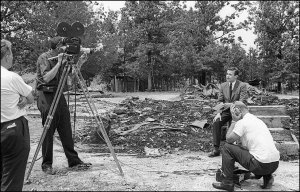
Ruins of Mount Zion Methodist Church. Photograph by Jim Lucas
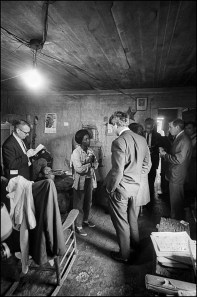
Robert Kennedy touring the Delta — Photograph by Jim Lucas
Which is ultimately why Jim Lucas’s photographs are so important. They force a response, even fifty years later. I’m reminded of a quote from the late Maya Angelu.
“I’ve learned that people will forget what you said, people will forget what you did, but people will never forget how you made them feel.”
Shock. Despair. Anger. Hope. These images, and those captured by so many other newsmen and even the freedom riders themselves, still make us feel.


June 4, 2014
A Rhythmic Pilgrimage
WWII vets are heading to Normandy for the 70th anniversary of the D-Day invasion this Friday. They’ll touch the sand, smell the salt air, revisit memories and maybe exorcise some demons. I’ve never been in combat, but I can relate to the pilgrimage part.
I’m still processing my own, not to France but to Florida. I drove five hours down Interstate 95 to take my niece to the Junior Pan Am Games of Rhythmic Gymnastics. I realize that’s not exactly crossing the English Channel but bear with me. It was the first time I’ve stepped foot in a competitive stadium since the broken back that ended my Olympic quest.
I still have nightmares about forgetting my routines or being forced to compete after twenty years. A regulation carpeted floor in front of a panel of female judges is my beachhead.
I’ve spoken about the training accident that both killed my career and freed me – but despite my TEDx talk I’ve never returned to the emotional injury. I was a freshman in college on the cusp of a dream – ranked fourth nationally and vying for a top three spot to represent my country in the 1984 Summer Olympic Games.
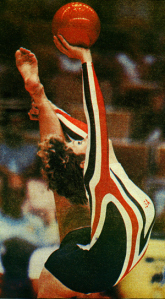
Me, before I broke my back
I fell, late at night, squeezing in some extra hours before departing for a competition in Asia. I woke up, pumped full of morphine for the pain, relieved. A broken back saved me from a life of starvation dieting, 6-hour-a-day training and hoping that other gymnasts would fail so that I’d succeed.I’ve had many chances to engage in the sport since then – invitations to become a judge, choreograph, even run a gym. But I blocked it out and never looked back.
Until my sister called with tickets to the Junior Pan Am Games in Daytona Beach. Her daughter Marina, the one who calls me her other mother, wanted to see the sport I almost conquered. She is eight, a gymnast too. I have introduced her to my mermaid friends at Weeki Wachee — and my cover career as a writer — but never to the reality of my childhood.
Taking a seat in the almost empty stands (rhythmic gymnastics still doesn’t draw the crowds in North America that it does in Europe or Asia) was just far enough away not to smell chemical carpet cleaner, the acrid hair spray or the liquid bandage gymnasts use to glue their leotards in place. I was up high enough that the athletes themselves were like tiny dancers, twirling ribbons and tossing hoops like toys.
It was a miniaturized version of my life until age 17. Watching the competition was like thumbing through a flip book of kicking legs, arching backs and juggling clubs. Marina was full of questions and I was a one-woman color commentator, explaining the differences between the ribbon and the clubs, the group routines and individual events. She was interested, but thankfully skeptical, not at all convinced it was really a sport.
I watched her gasp at the unnatural contortions of flexibility and clap for the gymnasts who managed to smile even when they dropped their apparatus. I saw how intoxicating it all seems to a young girl – the sparkling costumes, the dramatic music, the stage makeup and the cheers from the audience. And I forgave myself.
For caring so much and trying so hard. For defining myself by the standards of others. For thinking that making the Olympics was the single most important thing on earth and that quitting marked utter failure. When my niece snuggled into my arms I realized I could never have resisted the forces I witnessed again that evening in Daytona Beach. One small girl is powerless against the dreams of her parents and coaches. She is too desperate to please, to be perfect, to question the physical and psychological risks asked of her.
I wanted to scoop up all the rail-thin girls in a giant hug of reassurance – there is life after dreams. The adventure is in the awakening.
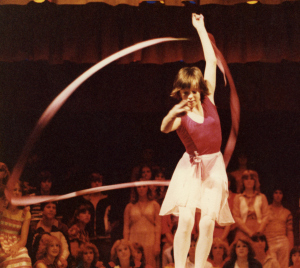
Me, eighth grade, before the dream of “Olympics” stole the wonder of the sport


May 8, 2014
The other mother I didn’t recognize
I love it when readers point out something I didn’t know my memoir said – it reminds me that the love story that at times felt like a fairy tale to me is actually true. And the truth reveals itself in different ways, to different people.
The Other Mother of the book’s title is, of course, the Jewish burlesque dancer turned Johnny-Appleseed of modern dance in the Deep South: Byrne Miller. I chose to use “the” instead of “my” other mother because I recognized that all of Byrne’s collected children can claim her.
What I didn’t realize is that she is only one of several other mothers who come to life on the pages of the book. My sister was one of the first to read it and ask if the title referred to me. I’ve always considered myself “Auntie Mermaid” to her three children, but to Jenny I was also an other mother, someone she knows will always be interested in the details of the kids we both love – no matter how small.
Then there’s the other mother I never considered at all – Byrne’s mother Fanny. She was one of my favorite characters to write about in the memoir. At first she scared me. Afterall, Fanny passed away decades before I even met Byrne.
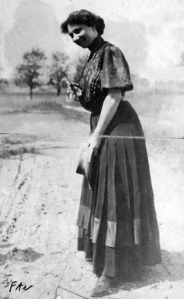
Fanny Miller – photograph courtesy of the Beaufort County Library Special District Collection
She spoke more often of her father – the Hungarian immigrant adored by her entire family, from whom she inherited her first love and talent: classical piano. But the Byrne I knew was more determined than dreamy, more practical than prodigy. She endured physical trails more painful than I could describe, yet was stoic – almost puritan in her toughness. “Pain is for the hoi polloi,” she’d say. Where did that side of Byrne come from?
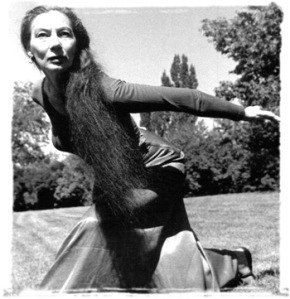
Back cover of “The Other Mother: a rememoir” courtesy of Beaufort County Library
The answer, I realized, is Fanny. She was the woman who gave Byrne the delicate necklace of seed pearls that is one of my most treasured possessions. It was passed down from mother to other mother and finally to me, along with this necklace – a poison pendant Byrne said would protect me should a suitor ever proved unworthy.
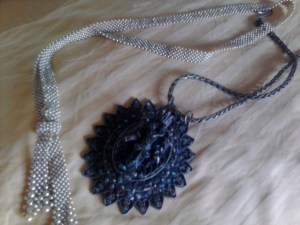
My inheritance, from my Other Mother and her mother
But even as I grew to admire and respect the Fanny taking shape on my page, I didn’t see her as an other mother. I wrote right through a truth that readers picked up on right away – -that she was Duncan Miller’s other mother. Byrne’s treasured husband had divorced himself from his own family for some deep dark reason he never revealed. Fanny became the mother he always wanted.
It’s right there, on page 76, Byrne noticing something I had not. “…she’d watched as her husband took to Fanny’s attentions like a forgotten flower, finally watered.”
No wonder Byrne felt so comfortable in her role of other mother, she had been the understudy all her life. I only wish she could have given a copy of “The Other Mother: a rememoir” to Fanny for Mother’s Day.



